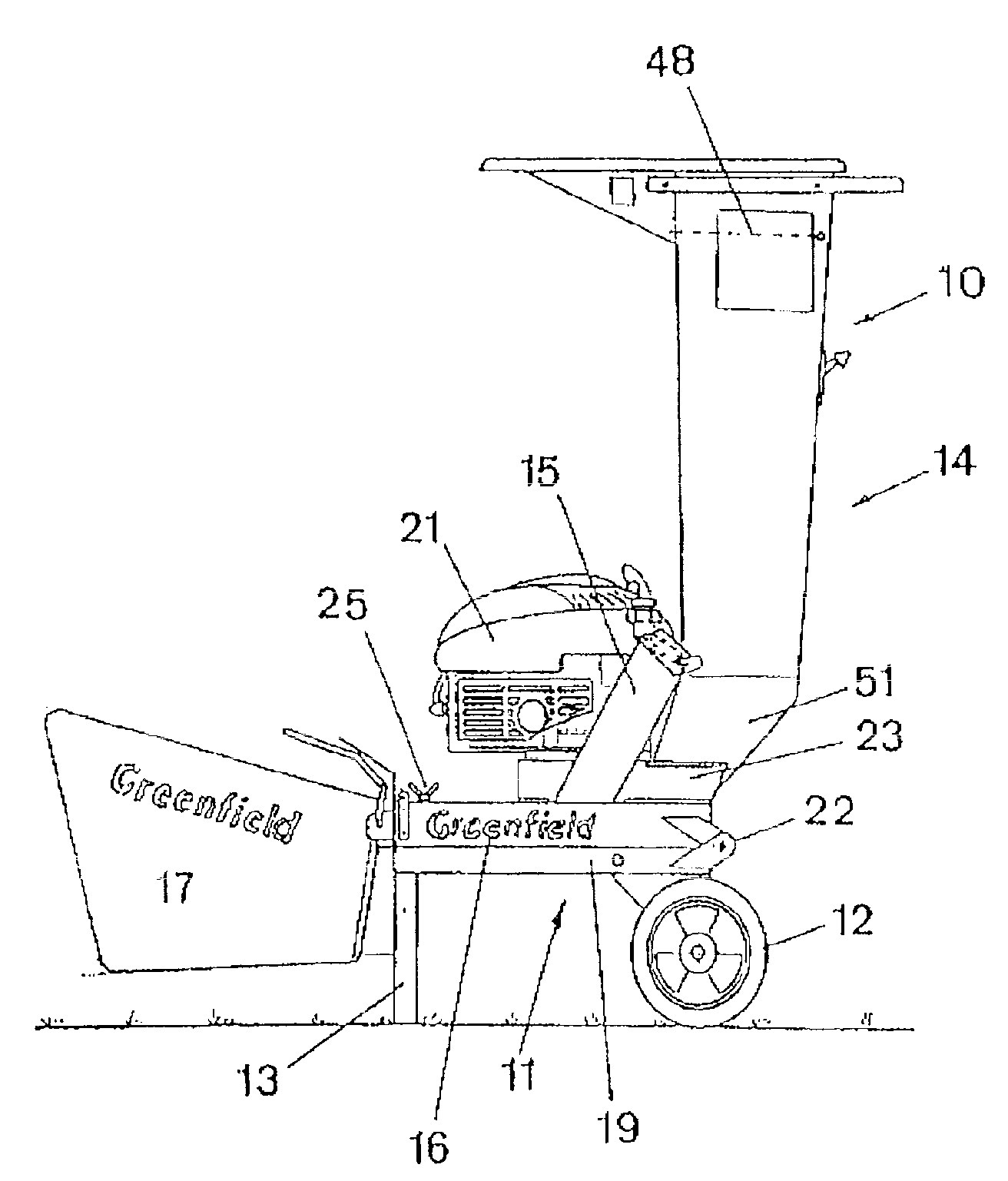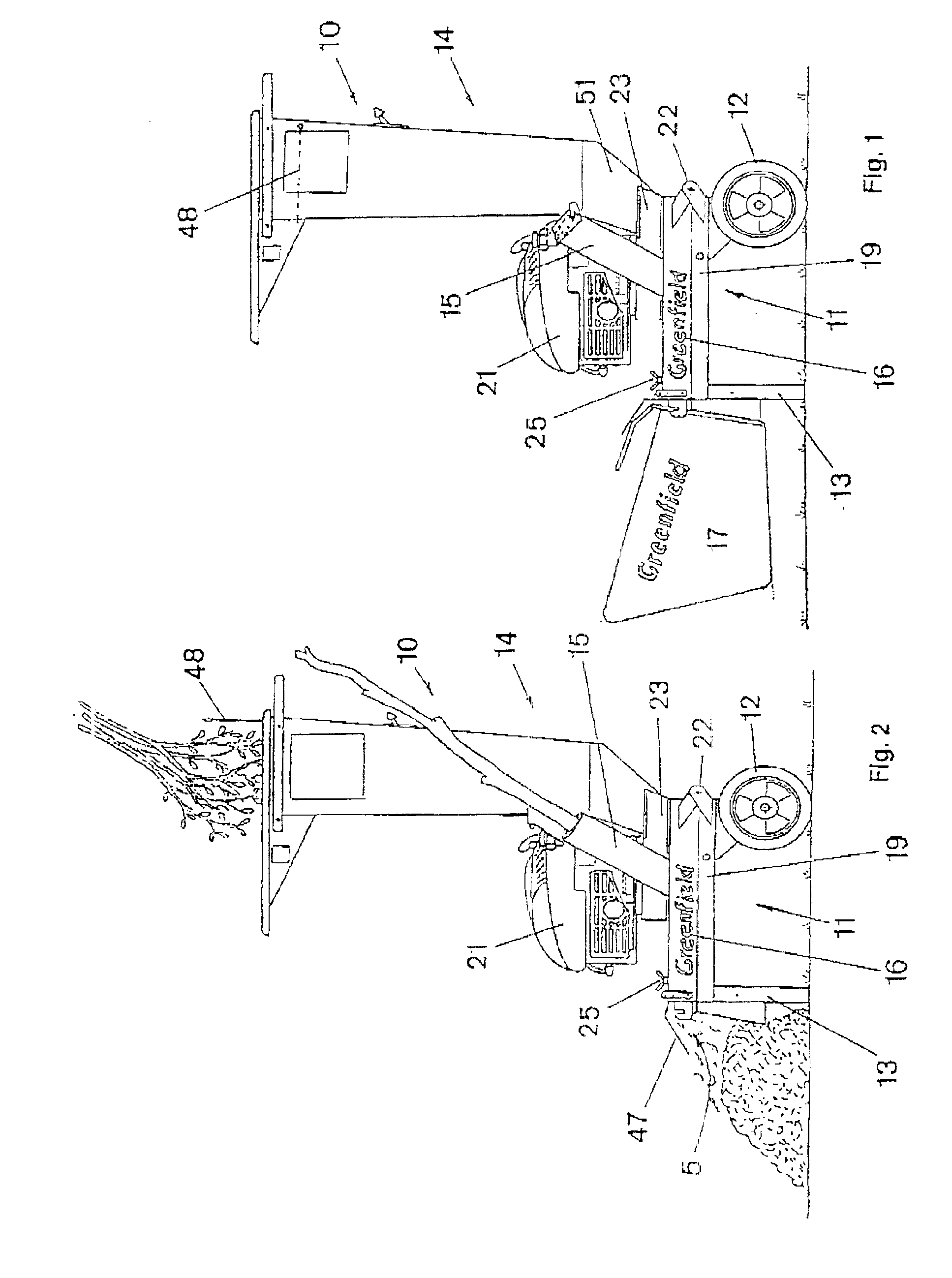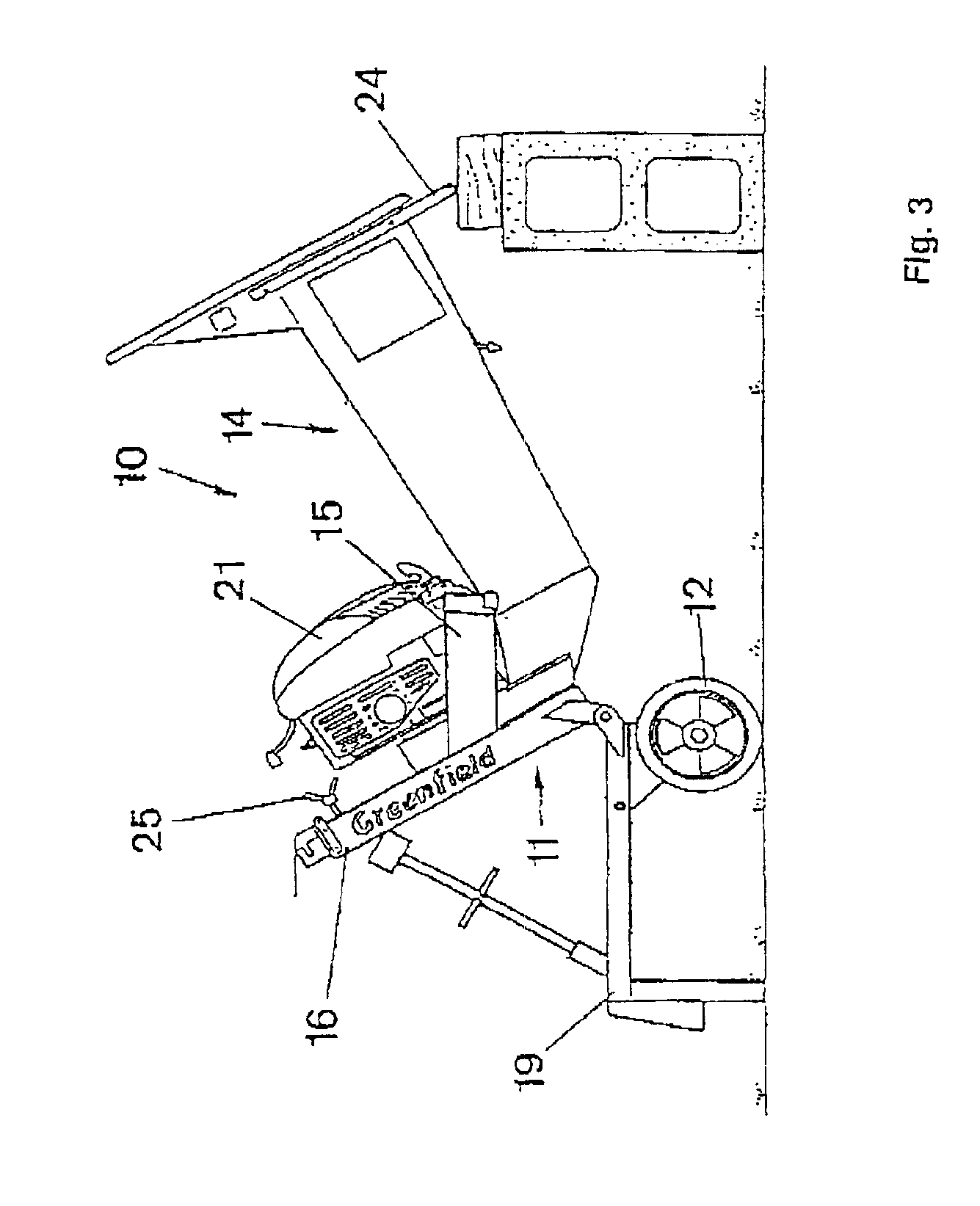Garden refuse shredding apparatus
a technology for shredding equipment and garden refuse, which is applied in the direction of solid separation, wet separation, grading, etc., can solve the problems of difficult and unreliable service, dangerous operation around children, and the most suitable for garden mulching
- Summary
- Abstract
- Description
- Claims
- Application Information
AI Technical Summary
Benefits of technology
Problems solved by technology
Method used
Image
Examples
Embodiment Construction
[0067]The garden refuse shredding apparatus 10 illustrated in the drawings has a two-part housing 11 supported on rear wheels 12 and a front stand 13, a feed hopper assembly 14 and a small bore inlet tube 15 extending upwardly from the upper housing part 16 and a catcher 17 suspended from the front of the housing 11.
[0068]The housing 11 contains a shredding rotor assembly 20, illustrated in FIG. 4, and supports a small petrol motor 21 thereabove for driving the shredding rotor assembly 20. Opposed pin hinges 22 attach the upper housing part 16 to the lower housing part 19 at the rear thereof which enable the upper housing part 16 and the components mounted thereon to fold to an open position, as illustrated in FIG. 3, at which the handle 24 rests on the ground and clear access is provided to the shredding rotor assembly 20 through the open underside of the top housing part 16. The front of the top housing part 16 is retained on the lower housing part 19, in use, by bolts 25.
[0069]As...
PUM
 Login to View More
Login to View More Abstract
Description
Claims
Application Information
 Login to View More
Login to View More - R&D
- Intellectual Property
- Life Sciences
- Materials
- Tech Scout
- Unparalleled Data Quality
- Higher Quality Content
- 60% Fewer Hallucinations
Browse by: Latest US Patents, China's latest patents, Technical Efficacy Thesaurus, Application Domain, Technology Topic, Popular Technical Reports.
© 2025 PatSnap. All rights reserved.Legal|Privacy policy|Modern Slavery Act Transparency Statement|Sitemap|About US| Contact US: help@patsnap.com



